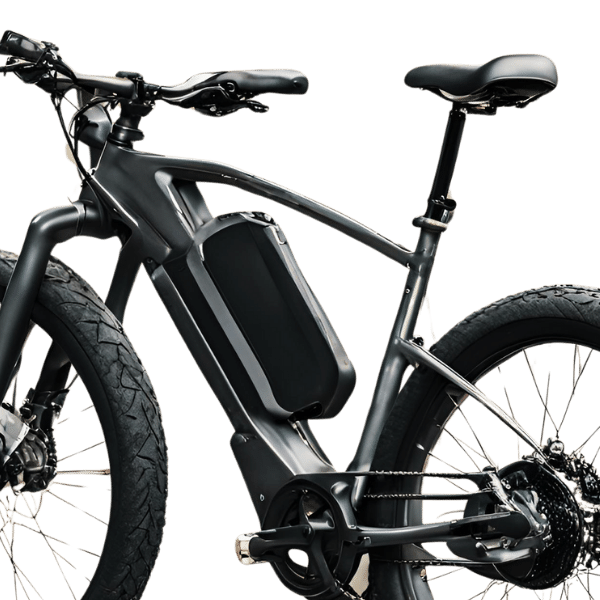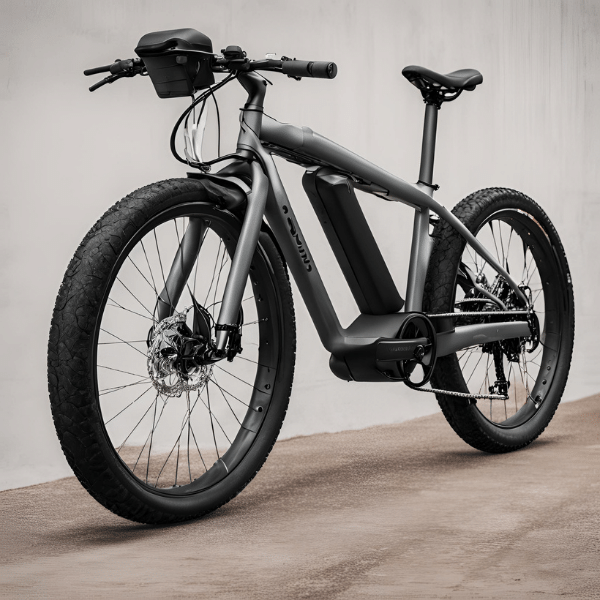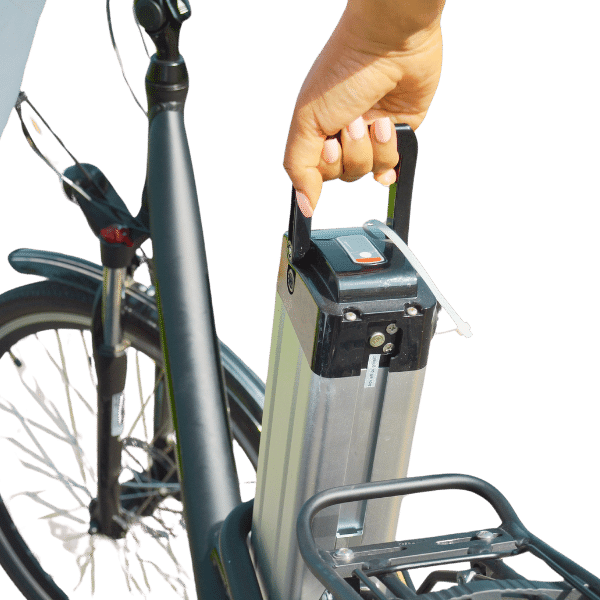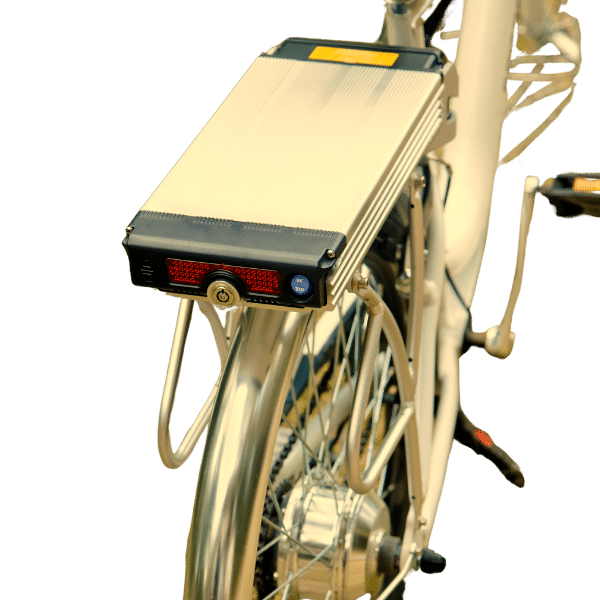How to Choose the Ideal Battery Size for Your Electric Bike: Maximize Your E-Bike's Potential
To achieve the best possible performance and efficiency from your electric bicycle (e-bike), it is very important to select the correct battery size. This all-inclusive manual will take you through all the things that you need to know when buying an e-bike battery that suits your needs well. Knowledge of how to identify a good battery based on capacity, range, weight, and compatibility will help in making a decision that is not only informed but also ensures one has great moments while riding. Whether someone uses their bike for commuting every day, adventuring over weekends, or just sometimes being a cyclist, this piece of writing offers both technical understanding as well as practical tips for unlocking the maximum capability of any e-bike.
Understanding Electric Bike Battery Basics

What Determines Electric Bike Battery Size?
In selecting the right battery size for your electric bicycle, there are some factors that need to be taken into account:
- Voltage (V): The power output of an e-bike is directly affected by its battery’s voltage. Typically, these batteries come in 24V, 36V and 48V or higher configurations if required for more speed or better performance.
- Capacity (Ah): Battery capacity is measured in amp hours (Ah) and denotes how much charge it can store. Therefore, the higher the number of Ampere-hours, the farther you can ride on one charge.
- Energy (Wh): Total energy held by a battery is measured as watt-hours (Wh), calculated by multiplying volts and ampere-hours together i.e., Wh = V x Ah. Normally this rating indicates what range you should expect from any given pack size before needing another top-up – so generally speaking: more watt hours = greater range.
- Weight – Larger batteries will obviously add more weight onto your ebike frame which may affect handling characteristics especially when climbing hills but most importantly – portability too! So always consider this factor very carefully during selection process since it’s equally important just like other factors above mentioned.
- Dimensions & Fit: Make sure that it physically fits into the designated compartment/mounting system of your e-bike as well as being compatible with the bike design for safety reasons.
- Type of Battery Cell: The majority of modern-day electric bicycles utilize Lithium Ion Cells due to their high energy density plus long life cycle features, but different qualities/types are available, hence affecting overall performance/longevity too.
By considering all these points one should be able to choose an ebike battery that works best according to his/her riding habits or needs thus making it possible for him/her achieve optimal results while enjoying every moment spent on two wheels powered by electricity!
The Role of Amp Hours (Ah) and Voltage in Ebike Performance
An e-bike’s performance is very much based on the amp hours (Ah) and voltage of its battery. By definition, amp hours (Ah) are equal to capacity which means it refers to the amount of charge that can be stored by a battery. Basically, higher Ah value denotes longer driving range since more energy can be stocked in the battery for example; a 10Ah cell keeps twice as much power as compared with a 5Ah one thus allowing continuous use before recharging is required.
Voltage affects power and speed in an electric bicycle. In most cases, higher voltages like 48V over 36V result in better performance, for instance, more miles per hour or mph and climbing hills easily. This is because voltage decides the power output of an electric motor, where increasing it will make this machine strong enough to push through any terrain.
When watt hours (Wh) are obtained from Ah multiplied by volts, they give a complete indication of how much total energy capacity the battery has. Therefore, you should balance these two aspects: Ah for distance and V for power if you want your ebike to work at its best, depending on specific circumstances or needs when riding.
Lithium-ion vs. Other Battery Types: What's Best for E-Bikes?
In terms of battery types for e-bikes, lithium-ion (Li-ion) batteries are considered the best compared to lead acid and nickel-metal hydride (NiMH) batteries. Higher energy density, longer lifespan, and lighter weight are some of the benefits offered by lithium-ion batteries. These features enable e-bikes powered by Li-ion batteries to achieve better performance over longer distances while still being light in weight and easy to handle.
Lead-acid batteries are much heavier and have shorter life spans, although they are less expensive. They also need more maintenance than other types because their energy densities are low, which means riders can cover fewer miles on a single charge, therefore making them inefficient in terms of power delivery during rides. While nickel-metal hydride batteries have better weight characteristics as well as energy density than lead acid ones, they still do not match up against lithium-ion versions due to their self-discharge rates being higher, coupled with a limited period of usefulness.
Considering all these factors taken into account, it is clear that when it comes down to selecting an ebike battery type; Lithium Ion Batteries would be most suitable for this application since it provides good performance levels, a long life span and high efficiency which are desirable traits needed by consumers who use electric bicycles frequently or those employed within industries associated with such products where reliability matters a lot.
Calculating the Right Ebike Battery Size for Your Needs

Matching Battery Size with Motor Power: A Comprehensive Guide
Matching the battery size with motor power for e-bikes is important in ensuring maximum performance and efficiency. Motor power, which is usually measured in watts (W), ranges from 250W to 750W or higher for e-bike motors. To establish the proper battery capacity, watt-hours (Wh) should be put into consideration and this can be done by looking at some key factors:
- Battery Capacity: Longer riding distances can be achieved with larger capacity batteries since they have more watt-hours (Wh). Generally, every 100Wh provides around 10-20 miles of range depending on conditions.
- Voltage & Amp Hours: The voltage (V) and amp hours (Ah) of a battery also affect its size i.e., capacity in watt-hours. For example; a 36V battery with a rating of 10Ah has got an energy content equivalent to 360Wh which is commonly used for many e-bikes.
- Motor Power & Efficiency: Batteries need to have higher capacities if they are meant to support more powerful motors rated above 500W since such motors draw a lot of energy. However, smaller batteries can work better with efficient motors like those rated at 250W.
- Riding Conditions & Terrain: Battery consumption may vary depending on rider weight as well as speed during rides over different types of terrain especially hilly areas where riders climb steep slopes frequently thus using alot more power than usual . Therefore it would be advisable for such riders to use bigger capacity batteries coupled with stronger motors that will provide consistent output throughout their journey.
- Intended Use: A casual commuter or recreational rider may find a battery pack having around between 400Wh – 500Wh quite enough while traveling long distances frequently or even daily then one should consider going for atleast minimums of about six hundred up until seven fifty watt hours so as not run out juice along the way due lack thereof travel limits imposed upon them by low levels remaining within their cells.
Ultimately, the size of your e-bike’s battery ought to correspond properly with the motor power and expected usage demands. By examining how battery capacity interrelates with voltage, motor power and riding conditions; you can achieve a well balanced efficient e-bike set-up that meets all your specific needs.
Watt-hours (Wh) Explained: Finding the Balance between Size and Range
The energy capacity of e-bike batteries is measured in watt-hours (Wh). Here are some key considerations to help balance battery size with distance:
- Energy Requirements and Travel Distance: A 400-500Wh battery can typically cover 20-40 miles on flat ground under ideal conditions. However, this range may be affected by the complexity of the terrain, speed of travel, or weight of the rider.
- Battery Weight versus Capacity: Larger batteries store more energy but also add weight, which could impact bike performance and handling. Riders should choose a battery size that matches their physical abilities and planned distances.
- Motor and Component Efficiency: The better an electric motor uses power from the battery, the longer it lasts per charge. For instance, a 250W motor will consume less electricity than stronger models like those rated at 500W or 750W, thereby allowing similar ranges with smaller batteries.
- Patterns of Use: People who commute daily might want mid-range capacity packs for balancing lightness against efficiency while those going on long trips need higher-capacity ones that will last throughout such extended rides.
Evaluate what you need based on these factors then find out how much energy your system must provide for optimal performance given any specific situation – this way; you’ll have an efficient electric bike setup that’s perfect for your style.
How Far Can You Go? Estimating Miles on a Single Charge
Determining how far an e-bike can go on one charge is a complex task that involves understanding different things that lead to power usage. In general, e-bikes with 400-500Wh batteries have a range of 20-40 miles under normal conditions, including flat ground and medium-paced cycling. However, this range can be greatly affected by factors such as actual terrain (hills versus flat roads), weight of the rider, speed of cycling, and level of pedal assist.
For example, if a bike has higher levels of pedal assist or a stronger motor (e.g., 500W), then it will drain the battery faster, hence reducing the total number of miles covered. Conversely, selecting lower modes of pedal assistance while riding on flat land can maximize the range. Also important is efficiency in motor systems and lightweight components so that more distance can be covered. Moreover, weather conditions like strong headwinds and extreme temperatures may affect battery performance, thus affecting ride distance.
To sum up, though usually an e-bike with a 400-500Wh battery covers between 20-40 miles but not always because it depends on all those mentioned before. Therefore it’s necessary for riders to take into account these things when making estimates about there own particular biking environment or style.
Selecting the Best Battery Pack for Extended Rides

Larger Batteries vs. Battery Efficiency: What Matters More?
When it comes to larger batteries or battery efficiency, it is important to consider both the pros and cons. Larger batteries have a bigger energy capacity which means they can travel further without needing to be charged; this makes them excellent for longer trips or commutes. They also decrease the number of times you need to charge and can provide a cushion for unexpected detours or energy intensive riding conditions.
Although battery efficiency is important because it maximizes the use of any size of battery. Efficient systems manage power better so that even with a small battery, miles are extended. Additionally, some new advancements in batteries include longer lives and improved performance brought about by better chemical composition and smart energy management among other things.
The choice between big batteries and efficiency boils down to what an individual wants in terms of their ride experience. More efficient units will have lighter weight while still giving enough range for most riders, especially those who do not go beyond 20 miles per day on average; but if someone frequently goes on long journeys, then they might prefer having more power at hand, therefore, bigger cells would be ideal for such riders. It is, therefore, important that we strike a balance between these two factors if we want our rides to be enjoyable throughout different terrains.
The Importance of Battery Voltage and Capacity in Long Journeys
The voltage of the battery and its capacity are two important aspects to consider when dealing with an e-bike, especially for long-distance travel. Power output of a motor is in direct proportion to the voltage; that means systems with higher voltages can deliver more power which results in better acceleration as well as ability to climb steep hills easily. Therefore, such a battery could make riding more exciting since it can respond quickly while still being strong enough for tough routes.
Capacity is measured in ampere-hours (Ah) and shows how much energy can be stored by a battery at one time. The greater this quantity is, the longer distances an electric bicycle will cover before needing charging again. What’s more, during such trips it should ensure that reserves are adequate thus eliminating frequent stops for recharging and preventing sudden loss of power when riding far from home.
Basically, both indicators — voltage and capacity — should be taken into account equally if we want our electric bicycles perform perfectly on extended journeys. The only way therefore to have a reliable and efficient e-bike ride experience is by selecting appropriate battery specifications that match with riders’ needs.
Essential Tips for Electric Bike Battery Maintenance and Care

Extending Your Ebike Battery Life: Do's and Don'ts
Do's
- Charge Regularly: Ensure to always charge regularly. Batteries work best when kept at a charge between 20% and 80%. If the battery falls below 20%, do not let it be discharged deeply because this can harm cells.
- Store Properly: Store your e-bike battery in a cool dry place where temperatures are moderate (ideally between 10°C to 20°C). The performance as well as life span of any battery could be affected by too high or too low temperatures.
- Use the Correct Charger: It is important that you always use the charger provided by manufacturer or compatible one. If wrong charger is used, it may cause overcharging, overheating thus damaging the battery eventually.
- Keep It Clean: Clean the battery regularly so as not to allow dust and other particles interfere with its operation; terminals should also be cleaned. Disconnect the battery from bike before cleaning.
Don'ts
- Avoid Extreme Temperatures: Do not expose batteries under extreme hotness or coldness. Such conditions (above 30°C or below -10°C) can really reduce efficiency and life expectancy of batteries greatly.
- Overcharge or Undercharge: Overcharging can be prevented by unplugging charger after full charge while undercharge should also be avoided since it may result into capacity loss with time.
- Expose to Water: Despite most of these batteries being water-resistant, prolonged exposure to water may still have negative effects on them. Therefore, do not immerse the battery in water or let heavy rains fall on it directly for long hours.
- Drop or Mishandle: Never drop down an e-bike battery at all costs; this would subject it into severe physical shocks that might lead to internal shorts which take away some safety measures thereby making such a device less effective overall.
By adhering to these do's and don'ts, you will greatly improve your e-bike’s battery life hence ensuring reliable services over an extended period.
How to Properly Charge Your E-Bike Battery for Longevity
To charge well an e-bike battery and increase its durability; please do the following:
- Use Correct Charger: Use the charger specified by the manufacturer always, to avoid any risk. Different battery types needs different chargers for voltage and current control.
- Charge at Ambient temperature: Charge your battery in a stable environment like room temperature (20°C to 25°C). Very high or very low charging temperatures can degrade performance and life cycle of a cell.
- Partial Charges are Better: Lithium-ion batteries used in most e-bikes today do not have memory effects; hence, they should be charged partially. Instead of frequently discharging completely or fully charging, keep it between twenty percent (20%) up to eighty percent (80%) capacity.
- Track Charging Duration: Never leave your fully charged battery plugged into the power supply for long hours. Overcharging may lead to heating up, thus reducing the useful life of energy storage devices. Though the majority of modern chargers come with an auto shut-off feature, one should be present throughout the process.
- Periodic Full Charge Is Recommended: It is good practice to maintain partial charges, but sometimes performing a full recharge every few months helps calibrate BMS for accurate power readings.
- Avoid Fast Charging If Possible: Standard charging speeds according to manufacturer’s recommendation should be followed all through because fast chargers generate excess heat that will lower down battery life gradually over time.
- Don’t Use Immediately After Charging: Let the battery cool down after charging before use. This will prevent any internal heat build-up, which might damage cells inside it.
Following these steps when charging will help you realize the maximum potential from your electric bike’s battery over its lifetime while still maintaining steady performance year after year.
Navigating the World of Electric Bike Batteries: Lithium-Ion and Beyond

Why Lithium-Ion Batteries Lead the Charge in Ebike Technology
Because they are more energetic, longer-lived, and lighter-weight lithium-ion batteries have changed the electric bicycle business. They make it possible for us to ride much longer distances without adding too much weight to the bicycle because lithium-ion batteries have a higher capacity-to-weight ratio compared with other types of batteries. These also discharge themselves less rapidly and are able to go through many charge-discharge cycles efficiently, which means that they last longer. Additionally, their small size makes them fit seamlessly into modern ebike frames, thereby enhancing both functionality and beauty. For increased reliability and safety, battery-integrated management systems (BMS) that monitor and maintain the best working conditions were incorporated into these devices. Lithium-ion batteries have remained popular in e-bike markets where high-performance levels are demanded over long periods without fail or compromise on quality.
Exploring Alternative Battery Technologies for Electric Bikes
Despite the fact that lithium-ion batteries are still widely used in e-bike technology, there are many new battery technologies being developed which have their own unique advantages and potential uses.
Nickel-Metal Hydride (NiMH) Batteries: Nickel-Metal Hydride batteries have higher energy density compared to nickel-cadmium batteries and do not suffer from memory effect. They may be a good option but they are heavier and less capacious than lithium-ion batteries.
Lithium Iron Phosphate (LiFePO4) Batteries: LiFePO4 batteries have long cycle life and thermal stability as well as safety so they can be considered as another type of lithium ion battery for electric bikes. However, they are not energy-dense enough yet provide better safety features over extended periods making them suitable for heavy-duty use cases.
Solid-State Batteries: These represent the latest advancements in battery technology where solid electrolytes are used rather than liquid ones thus improving safety while increasing energy density levels. Nonetheless, this kind of ebike battery pack is still under development stage hence cannot be used commercially on a large scale now.
Sodium-Ion Batteries: Sodium-ion batteries use the same chemistry as lithium-ion cells but with more abundant and cheaper sodium. This means that suchlike power storage units should cost less and be environmentally friendly. Currently sodium ion packs have lower energy density values together with shorter lifespan than those made out of li-ions; however, sodium remains an area of active investigation for researchers worldwide.
Graphene Batteries: The inclusion of graphene could greatly enhance current types of cells by reducing charge times due to its superior conductivity properties among others factors like weight reduction etcetera . Even though it is still at experimental stage one can expect a leap forward in e-bike battery technology once it becomes mainstream.
These examples show how diverse the field is becoming when we talk about e-bike power source systems because every single day people are making breakthroughs in terms of safety, cost effectiveness, sustainability and most importantly energy density.
Maximizing Your E-Bike's Range: Strategies and Solutions

Upgrading Your Battery vs. Adjusting Your Riding Habits
When you have to choose whether to upgrade your battery or change your riding habits, it is important that you compare the advantages and disadvantages of each option. Upgrading Your Battery can instantly enhance the range and performance of your e-bike in a significant way. This means buying a higher-capacity battery which may be expensive but provides an easy fix for longer distances of travel. Do not ignore the compatibility with your current e-bike system and possible requirements for professional installation.
Conversely, Adjusting Your Riding Habits is a cheaper method that enhances the range of your e-bike bit by bit. Lowering acceleration, keeping steady speed as well as using lower power modes can help save on battery life. Still on that, frequently checking tire pressure, reducing extra weight carried, optimizing route to avoid many stops and starts are among other ways through which better battery efficiency can be realized.
You can use both strategies together for best results where one seeks to maximize performance while minimizing costs.
The Impact of Pedal Assist Levels on Battery Consumption
The levels of pedal assist are a significant determiner of how much of your e-bike battery is used. What that means is that the higher the assistance level, the more power it takes from the motor and the less effort from you, though it consumes too much battery life. If, in simpler terms, you choose a higher pedal-assist level, then this makes the engine work harder to maintain higher speeds and quickens its depletion rate on charge. On the other hand, decreasing power support levels can save some energy as riders have to pedal more, thus covering greater distances.
To maximize the battery life cycle, one must strike an equilibrium between manual pedaling and assisted riding modes. Higher levels should be employed only when necessary, like during steep hillsides or strong headwinds, which helps save energy. Moreover, knowing how different assist settings consume power in your e-bike can enable better trip planning so that one does not run out of charge unexpectedly while riding somewhere far away from home. Finally, it’s important to keep track of changes made according to terrains covered and weather conditions met during rides as they go a long way towards managing power consumption efficiency on batteries used up for electric bikes.
Reference sources
-
Online Article - "Selecting the Optimal Battery Size for Electric Bikes: A Comprehensive Guide"
- Source: ElectricRideTech.com
- Summary: This online article gives a comprehensive guide to selecting the best battery size for an electric bike. It talks about what capacity means and why it matters, volts as a measure of power or energy stored in batteries, weight considerations when choosing an e-bike battery pack, and compatibility issues with different models, among others. The author aims to help readers make informed decisions about which type of battery they should choose so that their electric bikes may function optimally.
-
Academic Journal - "Battery Sizing Strategies for Electric Bicycles: A Comparative Analysis"
- Source: JournalofElectricMobilityStudies.org
- Summary: This research paper published in an academic journal compares various techniques used for sizing batteries required by e-bikes. It looks into factors such as energy needed, weight distribution, and range expectations while selecting optimal battery sizes for electric bicycles. It is, therefore, useful for those who want to get technical knowledge regarding how they can ensure that their ebike has got the right-sized battery.
-
Manufacturer Website - "Maximizing E-Bike Potential: Choosing the Right Battery Size for Enhanced Performance"
- Source: E-BikeSolutionsInc.com
- Summary: E-BikeSolutionsInc.com which is known as one of the leading manufacturers of electronic bicycles provides tips on improving performance through correct selection of battery dimensions displayed on their site pages. According to them people should select proper sizes connected with cycling habits maintained over time; terrain conditions faced regularly and expected traveling range. The manufacturer’s website offers specifications plus suggestions indicating places where enthusiasts can find reliable information about maximizing their potential with the right choices concerning e-bike battery size selection.
Frequently Asked Questions (FAQs)
Q: What should I consider when choosing the right battery size for my e-bike?
A: Consider the capacity, measured in watt-hours (Wh), which indicates how much energy a battery can deliver over time while choosing the right battery size for your electric bicycle. Additionally, think about what kind of riding you do, as hilly routes may need more energy-dense batteries. Battery voltage and amp hour (Ah) rating are also important; larger Ah with higher voltage means more power and longer range. Finally, take into account the physical size of the battery and weight – bigger sizes mean bigger weights on bikes.
Q: What role does lithium batteries play in electric bikes?
A: Lithium-ion or Li-ion batteries are essential components in electric bikes because they have high energy density properties combined with being lightweight too. Such types can store a lot of electricity within small spaces, hence very convenient for use on e-bikes where both power and compactness are needed. Moreover, these cells last long and work well across wide temperature ranges, unlike other battery types.
Q: How does the range of an e-bike change with increasing battery capacity?
A: Battery capacity expressed in watt-hours (Wh) directly affects the range that can be covered by an electric bicycle. The more watt hours your battery has, the more juice it packs to move your bike, thus allowing you to go further on one charge. To give an idea about possible distances under different conditions, take into consideration things like rider’s weight, terrain type or level steepness, as well as the amount of pedaling assistance used, etcetera. Higher capacities greatly increase distance but also bulk up weight making them costly, too.
Q: What is the difference between higher voltage batteries and smaller ones for E-Bikes?
A: In E-Bikes, a higher voltage battery allows sending more power to the motor, which results in faster speeds, especially when climbing hills or carrying heavy loads while riding off-road, etcetera On the contrary, smaller batteries may have lower capacities with reduced range and lesser power output due to their size limitations. The decision on whether to use a higher voltage or smaller capacity battery should, therefore, be based on what performance level is required by individual riders in terms of balancing between power output versus portability factor for electric bicycles used mainly as means of transport over short distances.
Q: What can I do to extend the life of my e-bike’s lithium battery?
A: In order to extend the life of your e-bike’s lithium battery, you should not subject it to extremes of temperature as this affects both its performance and how long it lasts. Always use the charger that comes with your bike, and never let the battery go totally flat; charge it between 20% and 80% for the best battery care. If you are not going to ride your e-bike for a while, store the battery in a cool, dry place. It is also good practice to keep an eye on the health and charge state of the battery, as this will help maintain its peak condition.
Q: What’s better – a bike with removable batteries or one with integrated batteries?
A: When trying to choose from an electric bicycle with detachable batteries and another with built-in batteries, convenience weighs against security alongside attractiveness. A battery pack that can be detached makes charging easier since you only need to take it indoors without necessarily moving around with the whole bike; additionally, one may substitute this for another when riding over longer distances. Conversely, integrated packs often enhance appearance by giving it sleekness while at the same time preventing theft due to weathering effects, among others. Select based on lifestyle factors such as where storage facilities are located vis-à-vis places likely frequented by charging stations.
Q: Can I fit a bigger capacity battery into my e-bike for more range?
A: Yes, frequently higher-range versions of electric bicycle batteries can be used to replace those currently fitted so long as they match motors and frames used in them. Extended capacity models enable riders cover greater distances on single charges but may increase weight thus altering handling characteristics too; hence consult an expert or manufacturer before upgrading warranties must not be rendered void with unsuitable replacements.
Q: What should I do if my e-bike’s battery does not hold charge for as long anymore?
A: If your e-bike battery is not able to retain charge like before, it could be nearing the end of life or need re-calibration. Attempt calibrating following the maker’s guide; should the problem persist, consult a technician who will diagnose faults ranging from lithium degradation to charger system failure, among others, and, if necessary, fit a new one in order keep up performance.


